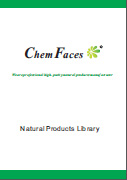| Description: |
1-O-Acetylbritannilactone has anticancer activity, it suppresses angiogenesis and lung cancer cell growth possibly via regulating the VEGFR-Src-FAK signaling, it also can combine with gemcitabine elicits a potent apoptosis of lung cancer cell. 1-O-Acetylbritannilactone may serve as a novel therapeutic intervention for various cardiovascular diseases, including chronic ischemia, by regulating VEGF signaling and modulating angiogenesis; it is a potent inhibitor of LPS-stimulated VSMC inflammatory responses through blockade of NF-kappaB activity and inhibition of inflammatory gene COX-2 expression. 1-O-Acetylbritannilactone may act as potent natural skin-lightening agents, it exhibits anti-melanogenic activity by suppression of tyrosinase expression via ERK and Akt signaling.
|
| Targets: |
VEGFR | Src | FAK | ERK | Akt | Bcl-2/Bax | Caspase | p38MAPK | cAMP | p65 | NF-kB | Tyrosinase | COX | PGE |
| In vitro: |
| Pharmazie. 2016 Apr;71(4):213-7. | | The combination use of 1-O-acetylbritannilactone (ABL) and gemcitabine inhibits cell growth and induces cell apoptosis in lung adenocarcinoma cells.[Pubmed: 27209702] | 1-O-acetylbritannilactone (ABL), a natural chemical component obtained from Chinese traditional medicine, Inula britannica, has been demonstrated to have anticancer activities.
METHODS AND RESULTS:
In the present study, we evaluated the anti-proliferative and the pro-apoptotic abilities of ABL alone or in combination with gemcitabine in human NSCLC cell line. A549 cells were treated, in vitro, with ABL, gemcitabine, and the combination of ABL and gemcitabine for 72 h. Our results showed ABL and gemcitabine inhibited cell growth and induced apoptosis of A549 cells. These effects after the combination of ABL and gemcitabine were superior to those of each alone. Furthermore, signal transduction analysis revealed NF-κB expression was significantly decreased by ABL and the combination treatment. IκBα and Bax levels were up regulated whereas Bcl-2 was substantially downregulated after all treatments.
CONCLUSIONS:
Our findings suggest that ABL combined with gemcitabine elicits a potent apoptosis of lung cancer cell and hence ABL has the potential to be developed as a chemotherapeutic agent. | | Arch Pharm Res. 2014 May;37(5):567-74. | | Hypo-pigmenting effect of sesquiterpenes from Inula britannica in B16 melanoma cells.[Pubmed: 24346861 ] |
METHODS AND RESULTS:
A bioassay-guided isolation of the chloroform fraction of the I. britannica using an in vitro melanogenesis inhibition assay led to the isolation of sesquiterpenes, 1-O-Acetylbritannilactone (1), britannilactone (2) and neobritannilactone B (3). Compounds 1 and 2 significantly reduced melanin production in a dose-dependent manner with IC50 values of 13.3 and 15.5 μM, respectively, whereas compound 3 was found to be cytotoxic. Compound 1 also inhibited the tyrosinase activity only in cell based-systems. Western blot analysis indicated that compound 1 inhibited melanogenesis by activating extracellular signal-regulated kinase (ERK) and Akt signaling and also inhibiting cAMP related binding protein, which regulates its downstream pathway, including tyrosinase, tyrosinase related protein-1 and TRP-2.
CONCLUSIONS:
These results demonstrated that compound 1, a major sesquiterpene from the flowers of I. britannica, exhibited anti-melanogenic activity by suppression of tyrosinase expression via ERK and Akt signaling. Taken together, our results suggest that these compounds may act as potent natural skin-lightening agents. |
|
| In vivo: |
| Biochem Biophys Res Commun. 2015 Aug 21;464(2):422-7. | | 1-o-acetylbritannilactone (ABL) inhibits angiogenesis and lung cancer cell growth through regulating VEGF-Src-FAK signaling.[Pubmed: 26102035 ] | The search for safe, effective and affordable therapeutics against non-small cell lung cancer (NSCLC) and other lung cancers is important.
METHODS AND RESULTS:
Here we explored the potential effect of 1-O-Acetylbritannilactone (ABL), a novel extract from Inula britannica-F, on angiogenesis and lung cancer cell growth. We demonstrated that ABL dose-dependently inhibited vascular endothelial growth factor (VEGF)-induced proliferation, migration, and capillary structure formation of cultured human umbilical vascular endothelial cells (HUVECs). In vivo, ABL administration suppressed VEGF-induced new vasculature formation in Matrigel plugs. For the mechanism investigations, we found that ABL largely inhibited VEGF-mediated activation of Src kinase and focal adhesion kinase (FAK) in HUVECs. Furthermore, treatment of A549 NSCLC cells with ABL resulted in cell growth inhibition and Src-FAK in-activation. Significantly, administration of a single dose of ABL (12 mg/kg/day) remarkably suppressed growth of A549 xenografts in nude mice. In vivo microvessels formation and Src activation were also significantly inhibited in ABL-treated xenograft tumors.
CONCLUSIONS:
Taken together, our findings suggest that ABL suppresses angiogenesis and lung cancer cell growth possibly via regulating the VEGFR-Src-FAK signaling. |
|
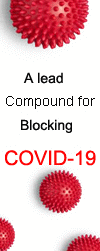
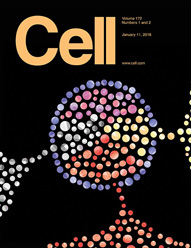 Cell. 2018 Jan 11;172(1-2):249-261.e12. doi: 10.1016/j.cell.2017.12.019.IF=36.216(2019)
Cell. 2018 Jan 11;172(1-2):249-261.e12. doi: 10.1016/j.cell.2017.12.019.IF=36.216(2019)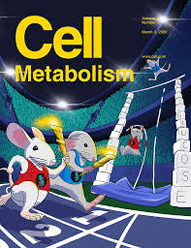 Cell Metab. 2020 Mar 3;31(3):534-548.e5. doi: 10.1016/j.cmet.2020.01.002.IF=22.415(2019)
Cell Metab. 2020 Mar 3;31(3):534-548.e5. doi: 10.1016/j.cmet.2020.01.002.IF=22.415(2019)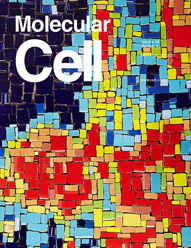 Mol Cell. 2017 Nov 16;68(4):673-685.e6. doi: 10.1016/j.molcel.2017.10.022.IF=14.548(2019)
Mol Cell. 2017 Nov 16;68(4):673-685.e6. doi: 10.1016/j.molcel.2017.10.022.IF=14.548(2019)